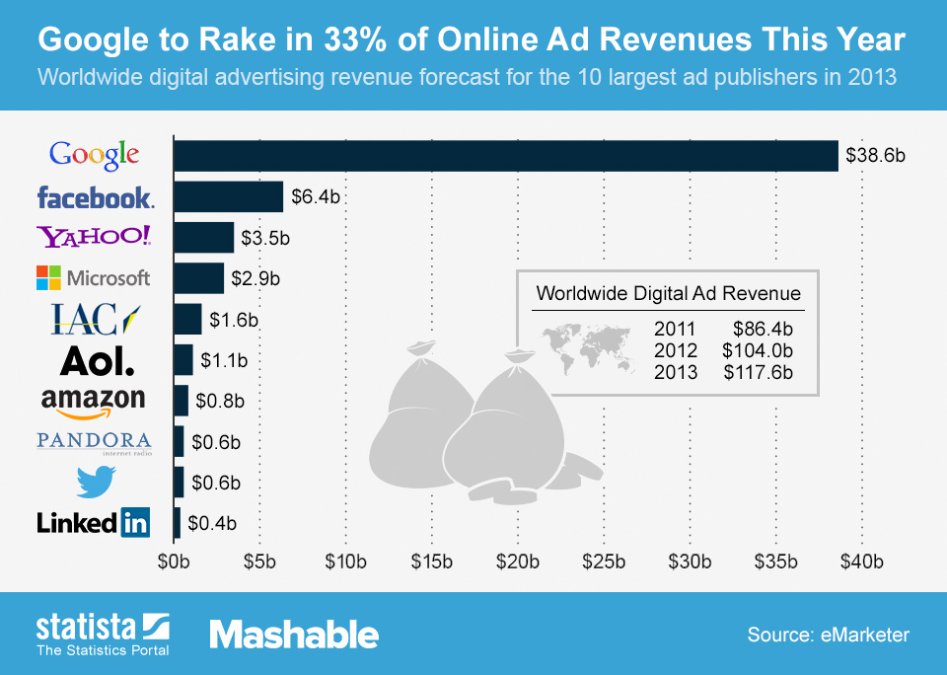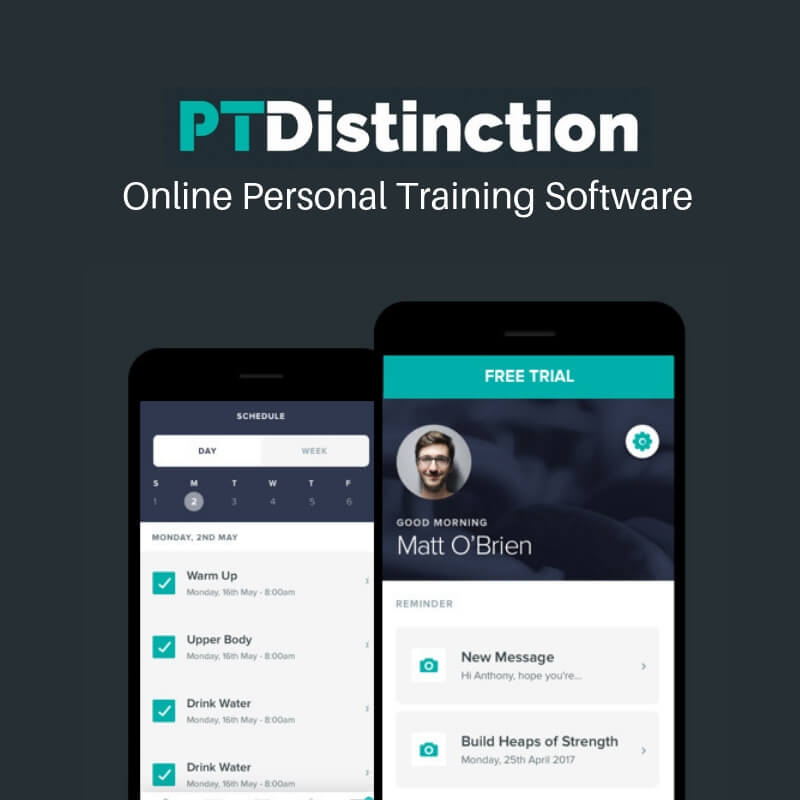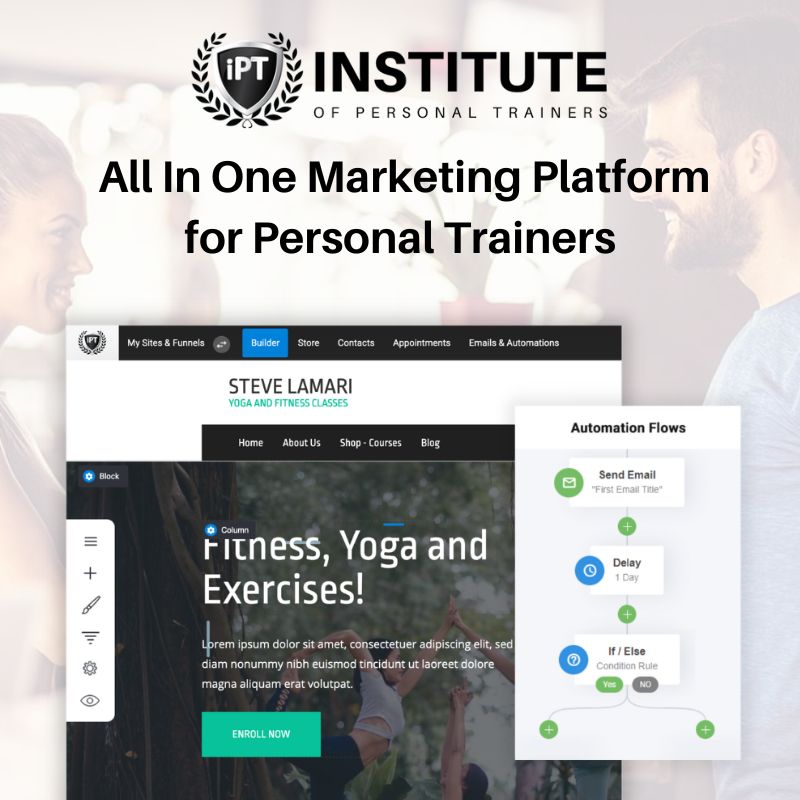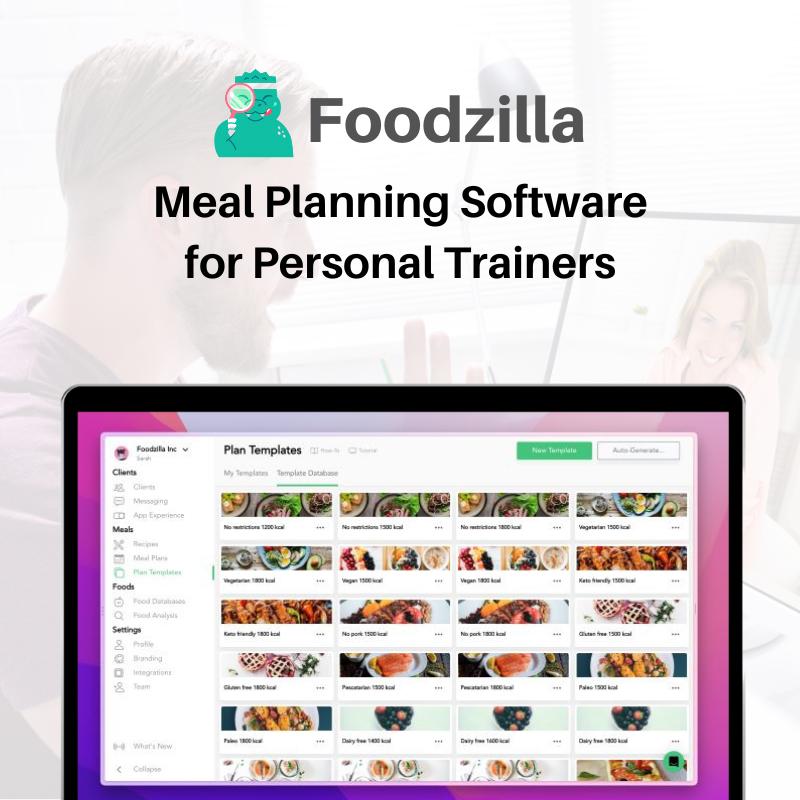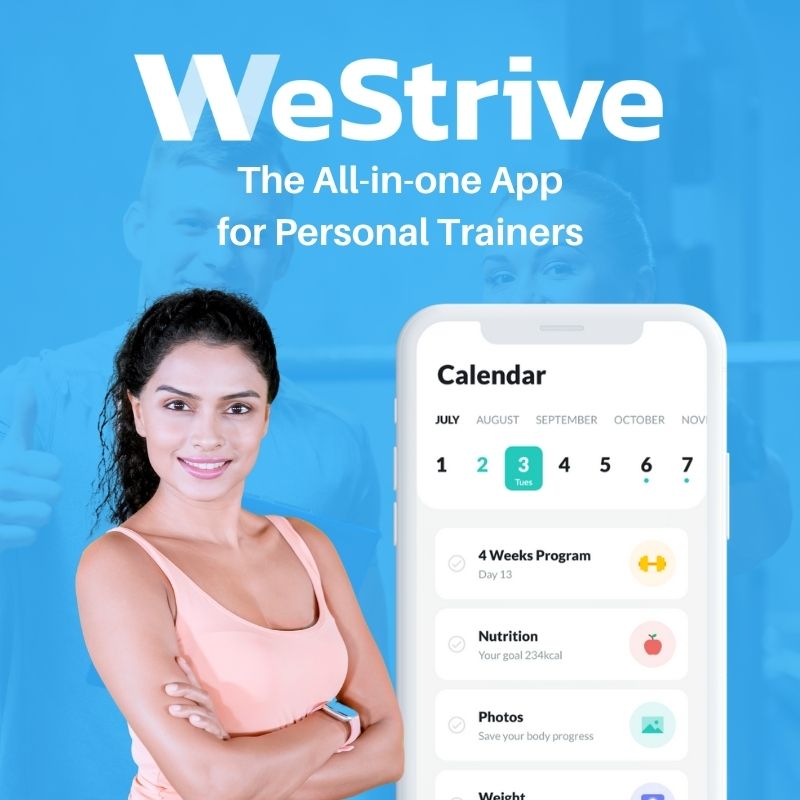If you're a self employed personal trainer, you're also a business owner. A business owner who employs his or herself (self employed).
As a business owner, you're probably also the accountant, operations manager, web designer, copywriter, branding and graphic designer and marketing manager.
Why Bother Assessing?
Keeping yourself on top of all these tasks while simultaneously having to put on a big smile as soon as your next client walks through the door can be a big strain.
And what makes it worse is that you often don't even know if all of the business-owner tasks you're doing are actually working, right?
And what makes it worse is that you often don't even know if all of the business-owner tasks you're doing are actually working, right?
That's where marketing assessments come in. Much in the same way you assess your clients for improvements in health in order to move them forward, you need to assess your business and marketing to move it forward.
So let's learn three simple things that you can measure regularly and how to measure them in order to assess your business and make better decisions to move your business forward.
1. How to Asses Your Fitness Website
The definition of success for one website is usually completely different to another. So in order to accurately measure how successful your website is, we must first define its goals.
The goal of your website is what you want it to achieve. For most personal trainers who are selling a service, that’s usually a form entry on the contact page, or if you’re selling a one off product like an eBook, your goal would be sales.
Using form entries as an example goal, you could measure conversion by calculating the percentage of people who visit your site that submit a from entry and then how many of those people buy from you.
Website visitors / Leads / New Clients
For example, if you get 10,000 visitors per month and 100 form entries per month, you have a 1% conversion rate.
10,000 visitors / 100 Leads = 1%
Then let's assume 2 of those 100 leads buy your $400 per month coaching program.
100 Leads / 2 New Clients = 2%
Now you’re probably wondering, is 2% a good amount of leads? That depends. If it cost you $100 to get 10,000 visitors and just two of those 100 leads pays you $400 each, that’s $700 profit. Which is good.
(leads (2) x client value ($400)) - Cost for visitors ($100) = $700
Conversely, if you spend $100 to get 10,000 visitors and one of those leads only you only get a $50 return, that’s bad.
(leads (1) x client value ($50)) - Cost for visitors ($100) = -$50
The goal of your website is what you want it to achieve. For most personal trainers who are selling a service, that’s usually a form entry on the contact page, or if you’re selling a one off product like an eBook, your goal would be sales.
Using form entries as an example goal, you could measure conversion by calculating the percentage of people who visit your site that submit a from entry and then how many of those people buy from you.
Website visitors / Leads / New Clients
For example, if you get 10,000 visitors per month and 100 form entries per month, you have a 1% conversion rate.
10,000 visitors / 100 Leads = 1%
Then let's assume 2 of those 100 leads buy your $400 per month coaching program.
100 Leads / 2 New Clients = 2%
Now you’re probably wondering, is 2% a good amount of leads? That depends. If it cost you $100 to get 10,000 visitors and just two of those 100 leads pays you $400 each, that’s $700 profit. Which is good.
(leads (2) x client value ($400)) - Cost for visitors ($100) = $700
Conversely, if you spend $100 to get 10,000 visitors and one of those leads only you only get a $50 return, that’s bad.
(leads (1) x client value ($50)) - Cost for visitors ($100) = -$50
What if your conversion rate sucks?
If none of your website visitors are turning in to leads and then in to sales, you could take a look at the following:
- Site design - a popular study by the NN Group listed design quality as one of the main trust factors. In other words, if your site looks like crap, you might be losing leads.
- Visitor profile - who are you sending to the site and where is the traffic coming from. Make sure the people who are landing on your site are the types of people that would be interested in your product or service.
If you're publishing a blog post about post natal fitness to your bodybuilding fans on Facebook,you have a problem.
The wording you use on your website will dictate how it shows up in search engines so be sure to use the same words your clients might use in your website copy. You can find out what your site is popular for or if at all using the SEM Rush Keyword checker here. - Next logical step - If a brand new website visitor finds your website and you ask them to “Buy Now”, you’re going to lose them. The next logical step for a client is usually to get in touch with a company representative to find out more or ask questions specific to them. Invite people to take THEIR next logical step instead of forcing them to take a step that only serves you.
Whatever the goal, be sure to actually define one and then measure it.
2. How to Assess Your Facebook Ads
The mother of traffic generation. Facebook ads are still the cheapest way (aside from a well search engine optimised website) to get targeted traffic to your website.
There are loads of different kind of ads but we’ll not dive in to that too much here. If you do want to learn more about using Facebook to get new leads, consider our Social Media Marketing Course for Personal Trainers on the Institute of Personal Trainers Academy.
Instead, we’re going to talk about how to assess whether the ads you’re paying for are actually working and if not, how to fix it.
First up, if you’ve ever run an ad and looked at your Facebook ads manager, you’ve probably thought “what does it all mean?!?!?”, so let’s get our head around some acronyms and definitions. Here’s what you need to know:
- Click through rate (CTR) - This is the percentage of people who clicked on your ad after seeing it.
- Relevance score - This is how relevant Facebook thinks your ad is to the audience you’re showing it to.
- Cost per lead (CPL) - This is how much money you spent to acquire one lead. It’s worked out by diving your total ad spend by the number of leads you acquired.
There are loads more but these are the main ones we need to look at. Click Through Rate and Cost Per Lead in particular.
Obviously, in an ideal world we would have a high Click Through Rate and a low Cost Per Lead.
But what’s considered high and low very much depends on your business structure. For example, if you spent $500 on ads that turn in to 10 x $500/month clients, you’d make $5000/month and you’d be happy to spend $500 on acquiring those leads, right?
But what’s considered high and low very much depends on your business structure. For example, if you spent $500 on ads that turn in to 10 x $500/month clients, you’d make $5000/month and you’d be happy to spend $500 on acquiring those leads, right?
Assuming you’ve done the figures, you have your ad spend and goals all worked out and you’ve waited a week or two to get some feedback from your ads, what do you do if your ads aren’t working?
- Low Click Through Rate - If you have a low CTR, either your ad needs some work or you’re not targeting the right audience. Change your ad or change your audience. One at a time so you can measure which is at fault. If your Relevance Score is low then you might need to change your audience.
- High Cost Per Lead - If your click through rate is high but cost per lead is high, the people who see your ad are interested in what you offer but they aren’t taking it. You may need to switch up the headline, change the design or make it super clear how they would get what you are offering them.
In simple terms, look for the bottleneck in your funnel and make the steps required to free up any friction at the bottleneck.
3. How to Assess Your Blog
Assessing a blog is a little bit different to assessing your web pages or Facebook ads. With a blog, you don’t necessarily measure conversions but rather, engagement.
Blogs are an extension of your website and they’re designed to bring traffic to your site. They’re the digital version of handing out leaflets.
And like leaflets, there’s no way of accurately measuring a cost per lead or cost per conversion. Instead, we measure how engaging your blog content is.
Blogs are an extension of your website and they’re designed to bring traffic to your site. They’re the digital version of handing out leaflets.
And like leaflets, there’s no way of accurately measuring a cost per lead or cost per conversion. Instead, we measure how engaging your blog content is.
To do this, we’ll be looking at a few things:
- Time spent on your site - If it takes 10 minutes to read a blog and people only stick around for two, you have a problem.
- Number of pages visited - People naturally move from one page to another. Especially if they are interested in your service.
- Pages per visit - Which pages they visit will help you to discover what they might be interested in most.
- Bounce rate - The bounce rate is how often someone lands on your site and immediately leaves. This usually means the website visitor did NOT expect to see what they saw when landed on your site and you should find out how they found you.
- Social media shares - How many likes and shares are a good indicator of how good your content is and helps to increase your brand awareness.
To assess the success of your blog, you could use one or all of the factors above, depending on how you use your blog.
For example, I use this blog page to educate personal trainers, increase brand awareness and invite people to try out our free fitness marketing resources.
This then builds the trust and rapport required to sell our Managed Website Subscription.
Therefore, I measure success in how long people stay on a page for (how much they read), how much the like and share the content (shares and likes) and how many people click through to our Learning Centre page.
This particular funnel is the long game. It’s a long term strategy and one that works exceptionally well.
Your blog funnel might be focused on directing people to a landing page to download a free resource so you can send them a series of email autoresponders. It might be a social media competition.
Whatever you decide to use a blog for, just be sure to give each blog a purpose, don’t just write for the sake of writing, spend time on writing quality content and really think about how to provide value to your readers.
With that said, if you think this blog is of value, or you know someone who would benefit from assessing their fitness marketing, do share it with them.
Oh yeah, and the Learning Centre. It’s full of fitness marketing resources and tools. It’s free and you’re welcome to join :)
This then builds the trust and rapport required to sell our Managed Website Subscription.
Therefore, I measure success in how long people stay on a page for (how much they read), how much the like and share the content (shares and likes) and how many people click through to our Learning Centre page.
This particular funnel is the long game. It’s a long term strategy and one that works exceptionally well.
Your blog funnel might be focused on directing people to a landing page to download a free resource so you can send them a series of email autoresponders. It might be a social media competition.
Whatever you decide to use a blog for, just be sure to give each blog a purpose, don’t just write for the sake of writing, spend time on writing quality content and really think about how to provide value to your readers.
With that said, if you think this blog is of value, or you know someone who would benefit from assessing their fitness marketing, do share it with them.
Oh yeah, and the Learning Centre. It’s full of fitness marketing resources and tools. It’s free and you’re welcome to join :)



